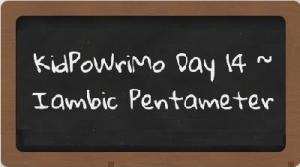With so many love poems in the world and more being written everyday, I would never say that I am an expert at writing them. I can only share my own experiences writing them. Specifically, my experience is with writing wedding poems. When my friends get engaged, I am usually asked to write a poem for the wedding. One person, I did not know once asked me to write her wedding poem. When I found out who she was, a multiple best-selling author, I was blown away! I enjoyed the whole experience very much, from interviewing the author-bride, to writing the poem and then reciting it at the wedding.
Love poems can be about a love between people, but it doesn’t have to be about people who are getting married. It can be about mother and child, brother and sister, friends, even someone you admire from far away, like a favorite movie star, singer or celebrity. If you have a pet, a hobby or a special place you love to visit, almost anything can be the topic of a love poem. Many poets have written “un-love” poems about things they don’t love.
If your love poem is not coming from your imagination or personal experience, you may need to find out more information about your subjects. When I write wedding poems, I interview the bride and groom, if possible. I use key phrases and details from the interview in the poem. Historical information from before the couple met is often helpful. Sometimes, I get an impression from how they say what they say, and often from some of the things they don’t say.
Poetic word of the day: “couplet” (click here to read the definition of couplet on YourDictionary.com)
Couplets are lines of about the same length that have a similar rhythm and often rhyme. I especially enjoy writing couplets in my love or wedding poems. Iambic pentameter is a good tool to use to give the lines in your couplets a matching rhythm.
PROMPT: Write a love poem about your love or someone else’s love; use couplets. If writing for someone else, consider giving the finished poem as a gift to them.
My personal example:
Hugs and a snack pack were waiting at three.
That’s how my mother showed me she loved me.
Homework together and reading at four.
We played outside til dad came through the door.
These are my two couplets to start my poem. They’re not perfect iambic pentameter, but they are a start. I can edit them later if I like.
FOR PARENTS OF YOUNGER CHILDREN: Younger children might do well to write a love poem for a favorite toy or other item. Let your child(ren) talk about why they love what they love. Encourage them to find rhyming words and to use a poetic device. Have them finish a sentence: “You love Teddy because… ______.” When you play with Teddy, _________.” Write down the answers.
I offer this post commemorating what would have been the 60th anniversary of my parent’s marriage on July 19th.

